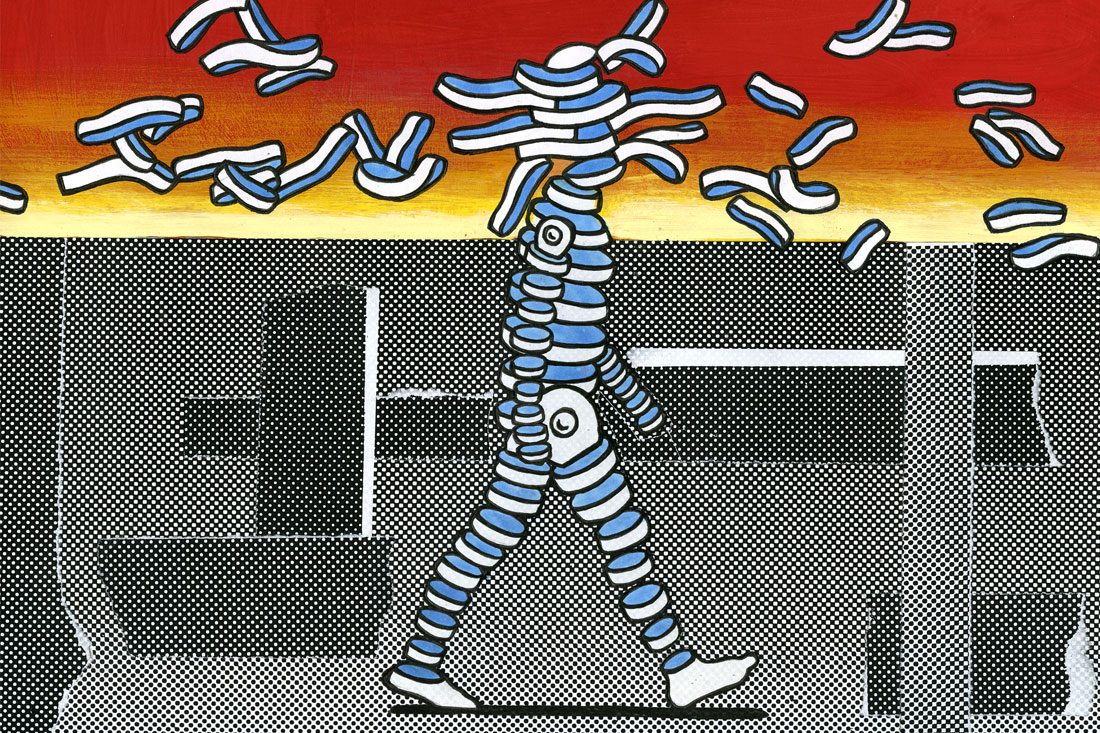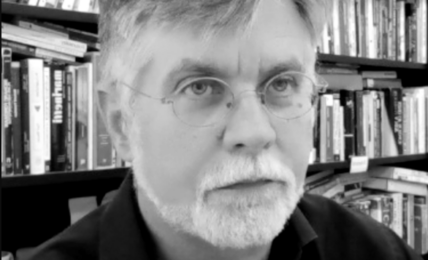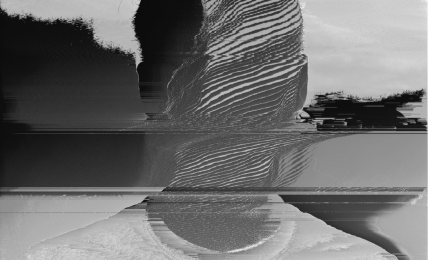Digital America interviewed Sarah Lasley in November of 2024 on her work Welcome to the Enclave.
:::
Digital America: In your animated film Welcome to the Enclave (2023), you describe in your artist statement that it “exposes the baggage” we bring to the internet and what the future could look like when people don’t address their real life problems. The film uses explicit imagery and humor to create a thought-invoking piece regarding our digital footprint. How should viewers heed this warning?
Sarah Lasley: The key focus of the film is on the baggage of whiteness, particularly white people’s tendency to center themselves often without awareness or consideration for the space they’re entering. This is true for both characters in the film—”Karen” types like Moni, who strive to uphold the status quo, and new-age spiritual women like Blair, whose “good vibes” can unintentionally stifle meaningful growth and action. Both embody a colonialist mindset, a pattern of cherry-picking the parts of a context, culture, or history that are convenient or affirming, while ignoring the rest—particularly the histories of oppression and exclusion. In digital spaces, we see similar dynamics. The internet offers immense freedom and potential, but we can’t ignore its rampant racism and sexism. It’s not unlike the American dream, which was carved violently into land that wasn’t ours, built atop silenced histories of genocide and oppression. Our digital utopias risk repeating those same mistakes if we aren’t intentional about slowing down and recognizing the structures we’re perpetuating.
Another aspect of this avoidance manifests in how the women respond to the abuse they are receiving. As an elder millennial, I saw my generation begin to address trauma, abuse, and mental health in ways that previous generations couldn’t. Gen Z has taken this work even further, but for my mother’s generation, acknowledging pain and abuse was rarely an option. Survival often meant ignoring and covering up, because no one believed women then—and, let’s be honest, often still don’t. This idea of control—trying to manage and perfect every aspect of life—is central to both personal and cultural anxieties. It’s a delusion, one that disconnects us from the messy, uncontrollable essence of being alive. Nature is a profound teacher here: no matter how many aqueducts we build or chemicals we spray onto lawns, floods and weeds will still come. Nature adapts and survives on its own terms, and I think we could take some notes from that.
So I guess my hope for viewers is to recognize and disrupt the socio-cultural patterns we’ve created in the physical world when we engage with digital spaces. Slow down. Listen. Observe. Technologies are built in our own image, which means they often replicate the cycles, systems, and hierarchies that weren’t serving us already.
DigA: The work explores themes of racism and misogyny as the “delusion” of The Enclave’s pursuit of “the white, suburban ideal” unveils itself throughout the narrative. Now, post election, where the electoral and popular vote rejected basic tenets of equality, can you talk about the “white suburban ideal” as it sits within our current reality?
SL: Yes, this definitely builds on what I spoke about earlier. Isolation and “enclaving” are at the root of the dark moment we find ourselves in politically. When white folks fled to the suburbs after WW2, they were escaping the important challenges of living in a complex world of different perspectives and viewpoints. Instead of grappling with the root causes of social issues—like systemic inequality or racial oppression—they chose to focus only on the symptoms, like crime. But those underlying ailments don’t resolve themselves just because they’re out of sight. They fester. And this act of “othering,” of distancing ourselves from the discomfort of difference, has bred dehumanization, aggression, and violence. To assume that one can remove themselves from reality and hide in perceived comfort is delusional because we are relational beings. To live without engagement, without connection to others and to difference, is to deny an essential part of what it means to be human.
Technology has only deepened this problem. Algorithms are designed to feed us content that aligns with our existing worldviews, further siloing us in our beliefs. It’s an additional layer of isolation on top of the geopolitical structures we inherited from things like white flight. Technology doesn’t challenge us—it panders to us. We’ve built tools that keep us isolated not just in our physical lives but also in our cultural and intellectual ones, perpetuating misunderstanding, mistrust, and even deteriorating health—mentally and physically.
When we refuse to see, listen to, or engage with people who are different from us, we create a cognitive dissonance that reinforces this isolation. Our beliefs grow stronger, even in the face of contradictory evidence. That dissonance is fertile ground for manipulation. A figure like Trump thrives in this environment—someone willing to distort truth so thoroughly, even contradicting himself within a single sentence, finds a receptive audience in those already primed to pick and choose what they want to hear. And if they don’t do it themselves, the algorithm is happy to do it for them.
DigA: Music is a key part of this short film. How did you approach the score?
SL: The main corporate music tracks were from a stock music website. I think I searched for the most generic, optimistic songs I could find—music so repetitive it felt like being stuck on hold with customer service. I intentionally used the shortest loop versions to amplify that sense of relentless banality.
For the final song, I knew I wanted to have a “swan song” moment where Moni submits to the fate of the neighborhood the best way she can. I knew it had to be a deep cut from the holy trinity of white boomer mom favorites: Carole King, Barbra Streisand, or Carly Simon. My actor and collaborator, Brenna Palughi, suggested “Coming Around Again” by Carly Simon. The message of the song is perfect for the film’s climax. It’s a song about staying in a situation that’s breaking your heart and keeping up appearances despite the pain. That’s what Moni is doing in that final dance scene. I’m an avid karaoke singer, and I thought a karaoke, low-fi version of the song would fit better within the world of the film. I like the “almost-ness” of the fantasy neighborhood. The 3D graphics for The Enclave are a bit second-rate, partially due to my own limitations. Still, I purposefully built the neighborhood in Unity instead of Unreal, a more cinematic game engine, to give it a noticeably digital look. The 3D animation isn’t quite good enough to fool you into thinking it’s real, but if you, like the women in the film, wanted to believe badly enough, you could suspend disbelief and accept it as real enough. The karaoke track feels similar to me.
DigA: Women take center stage in your work—in all of their complexities. Themes of sexual desire in How I Choose to Spend the Remainder of my Birthing Years (2020), self-liberation in The Imagemaker (2018), the tropes of female friendship in She She (2011), and more are addressed in your previous work. Welcome to the Enclave implements similar thoughts from viewers. What theoretical structures underpin your approach to women and femininity in your work? Who inspires you?
SL: These are such thoughtful questions—thank you for engaging so deeply with my work. I’ve always been fascinated by the distinction between being looked at and being seen as a whole, complex human. For me, this inevitably ties into the construct of whiteness. White women, for instance, occupy a messy double-bind: they are oppressed by patriarchy but simultaneously benefit from white privilege. It’s tempting—and easy—to focus solely on their victimhood, especially since it aligns with familiar tropes like the damsel in distress, which ultimately further subjugate women within a patriarchal structure. I’m interested in the complicity of spectatorship. How we view others says a great deal about our own fears, insecurities, and blind spots.
This theme is visually woven into the end of the film, where the camera moves through the 3D-rendered mountains. As we enter the model, the mountain becomes invisible—it disappears. This disappearance is a feature of 3D modeling called “normals.” The interior of a model isn’t rendered because it’s assumed the camera will never see it, so there’s no need to waste processor energy on it. For me, this concept of “normals” resonates deeply with the perceived invisibility of whiteness. Whiteness functions as a default or “normal” making it difficult for white people to recognize how their own racial identity contributes to and benefits from systemic racism. When you’re inside whiteness, it can seem invisible, almost nonexistent, but for BIPOC folks who encounter and navigate whiteness daily, it’s as imposing and unavoidable as a giant mountain. This duality—of seeing from the outside versus the inside—is a key tension I explore in my work.
Finally, my films embrace what I call a feminine film form. I value non-linear, sensorial experiences over traditional, dialogue-driven narratives. This approach is deeply inspired by the work of early experimental filmmakers like Maya Deren, who was one of the first to articulate female subjectivity on film. She didn’t just depict women—she spoke from inside the female experience, and that legacy has profoundly shaped my own practice.
DigA: Can you talk about how you employ satire in your work? Why this tool?
SL: Comedy is a tool for processing pain, and it really feels like we’re in a “laughing through tears” moment these days. I regularly find myself caught in the overwhelm and absurdity of it all, and so humor becomes a survival tool. Someone once asked me in a post-screening Q&A if I considered “Welcome to the Enclave” a documentary. That made me smile, because in a way I do. All of my films are made from a deeply personal place. I take my own emotional landscape and carve it into my locations. My characters are always parodies of myself or my family, etc. I I was raised Southern Baptist, where anger wasn’t something you were allowed to express. Anger was reserved for God, the pastor, or maybe the men who claimed they were “protecting” you. Women, on the other hand, were expected to repress that anger—to swallow it. Comedy became my way of processing my anger.
DigA: What are you working on now?
SL: My new film “Climate Control” addresses the environmental responsibility of using digital media, particularly with the burgeoning field of generative AI. The film follows a documentary filmmaker tackling the dangers of fossil fuel extraction who is consistently subverted by an AI bot who prefers the distraction of a generic love story. It’s a dark comedy that delves into themes of eco-anxiety, the climate crisis, and the staggering carbon footprint of generative AI. There was a recent study released by MIT Press that revealed how one single AI generated image uses the same amount of energy as a full charge of your smartphone battery. Imagine the energy toll of an AI generated video that uses 24 frames/images per second! The energy use is massive, and until we create sustainably systems for energy renewal, we are escalating our already catastrophic climate situation.
Capitalist consumerism has conditioned us to see digital technologies as tools of freedom and creativity, and engaging with AI often feels like playing a slot machine. Do I really need to write 40 prompts for the dopamine hit of watching AI attempt to generate a video of puppies turning into cheeseburgers? Does my ego need the endorphin rush of feeling like a god, creating realities that didn’t exist before? How fleeting is that chemical high? And what resources were expended for this brief distraction from the overwhelming realities of the world?
I made the film in collaboration with my Gen Z students, hiring them to fill every production role. Their energy and perspective were vital to the project, and their activism continues to inspire me. Regardless of where you fall on the political spectrum, I think we can all agree that young people deserve a better future than the one they’ve inherited.
:::
Check out Sarah Lasley’s work Welcome to the Enclave.
:::
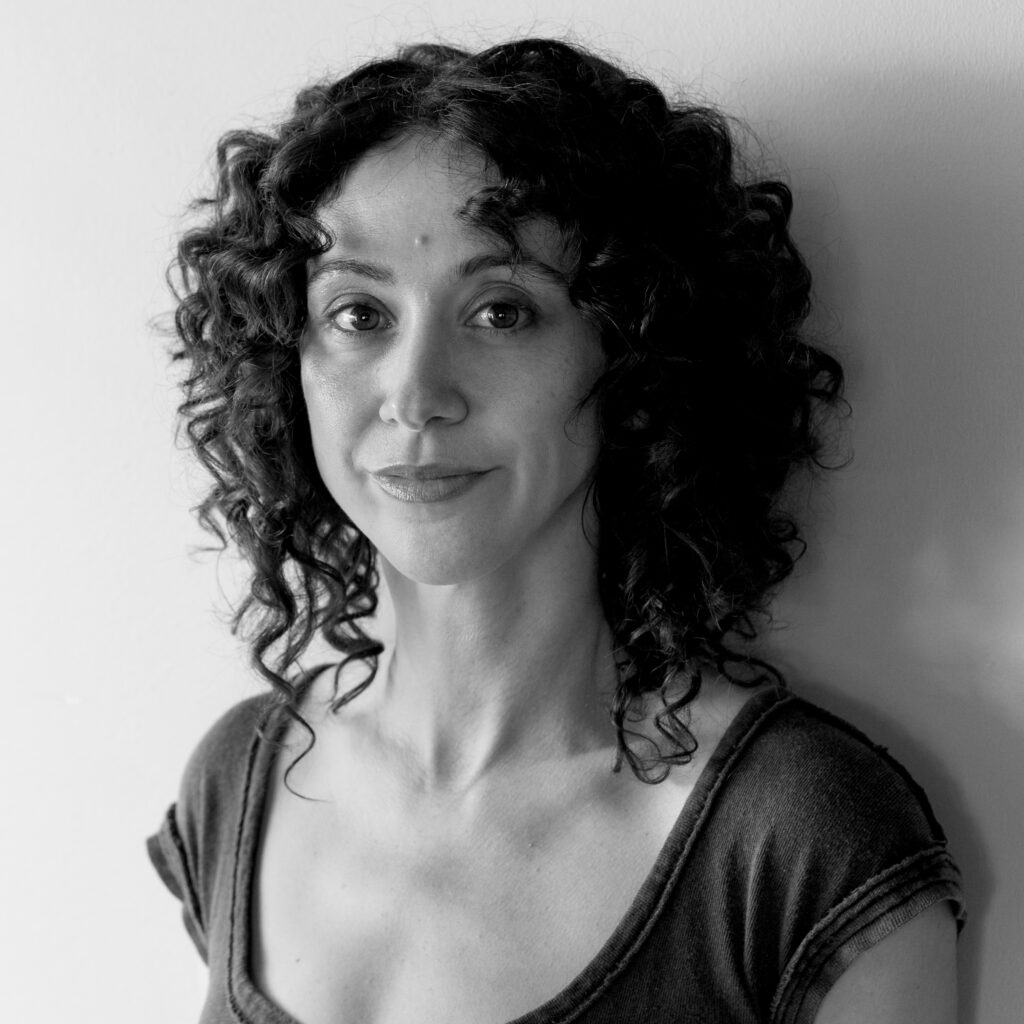
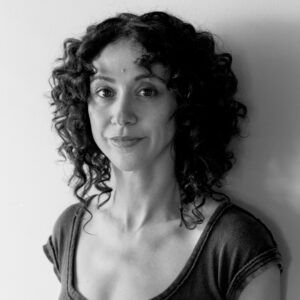
Sarah Lasley is an award-winning filmmaker from Louisville, Kentucky and an Assistant Professor of Film at Cal Poly Humboldt. Her no-crew, no-budget experimental films critique our current moment with absurdist humor. She has screened internationally at festivals, museums, and galleries such as Slamdance, Ann Arbor, Athens International Video and Film Festival, Cairo Video Festival, Nitehawk Cinemas, Katonah Museum of Art, and the Wrong Bienniale. She holds an MFA from Yale School of Art, a BFA from University of Louisville, and was a resident of the Skowhegan School of Painting and Sculpture in 2004.

